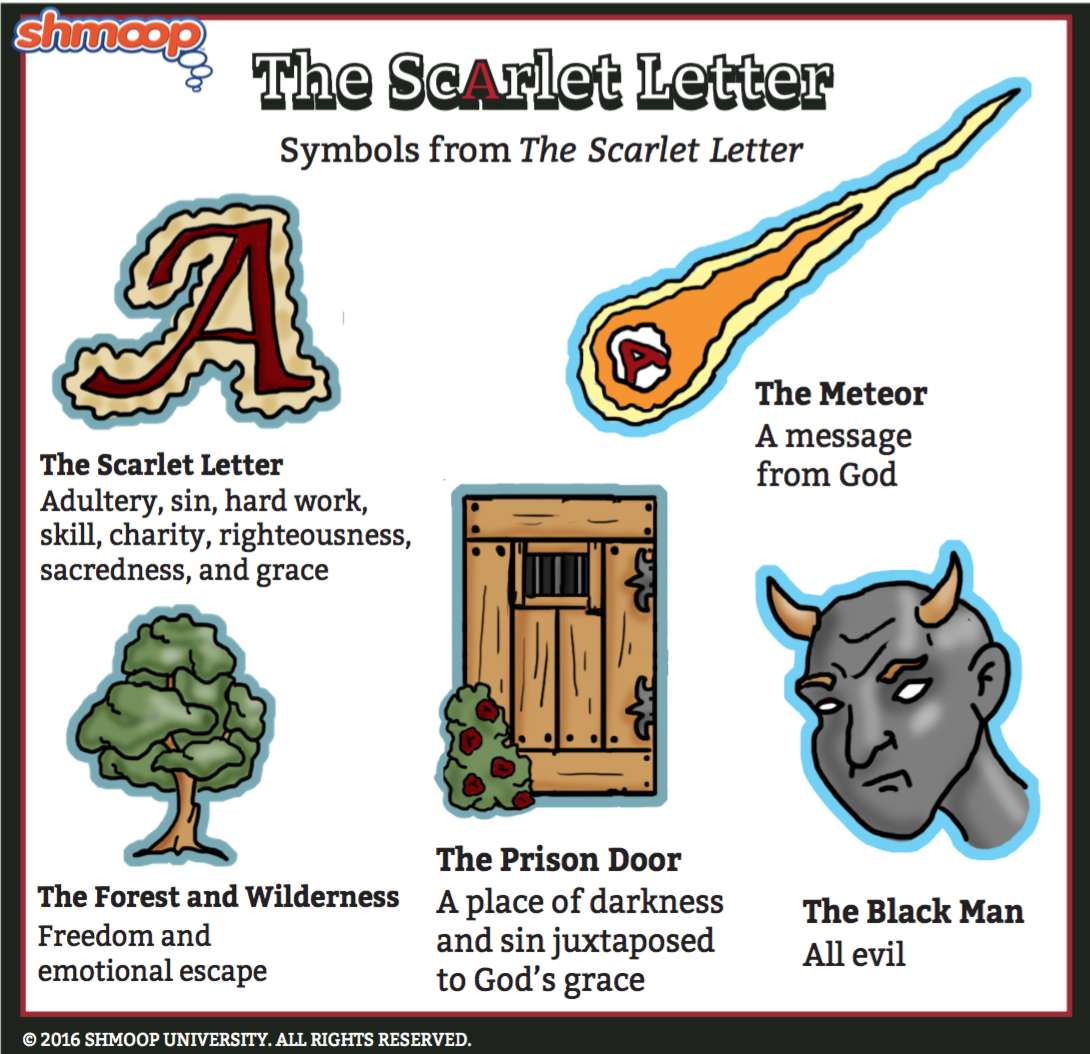Symbolism, Imagery, Allegory

(Click the symbolism infographic to download.)
After the little Custom-House intro, Hawthorne dumps us right in the middle of the Puritan community, at a door that's "heavily timbered with oak, and studded with iron spikes" (1.1).
Well, it is a prison door. You didn't expect something out of a Thomas Kinkade painting, right?
That's not all, either. Our narrator goes on to describe it as never having known "a youthful era," i.e., innocence (1.2). Only 15 or 20 years after it was built, it's already "marked with weather-stains and other indications of age" (1.2); it has a "beetle-browed and gloomy front" (1.2); and in front of it is a weedy plot with suck lovely sounding plants as "burdock, pig-weed, apple pern" (1.2).
And there's also a rosebush. If the prison represents the harsh justice of the Puritan, which it does, then that surprising rosebush represents kindness and forgiveness. The iron door is everything that's strict and unrelenting in Puritan society (see our definition of "legalism" in the "Compassion and Forgiveness Theme" for more on this), while the rosebush seems to represent the concept of "grace" or forgiveness. In Christian thought, grace is "unmerited mercy": forgiveness of sins even though forgiveness is undeserved, something like when you forgive your boyfriend for forgetting your month-a-versary even though he totally doesn't deserve it.
Since the prison is a place of darkness and sin, the beauty of a wild rose bush growing in such an unexpected place symbolizes God's grace. By starting us off with this ugly door and beautiful rosebush, Hawthorne is letting us know that these issues of justice versus mercy; punishment versus forgiveness; and judgment versus grace are going to be super important.
